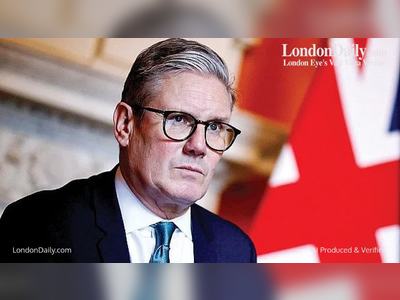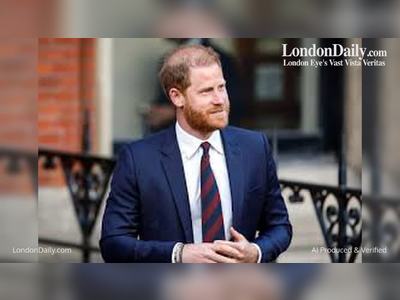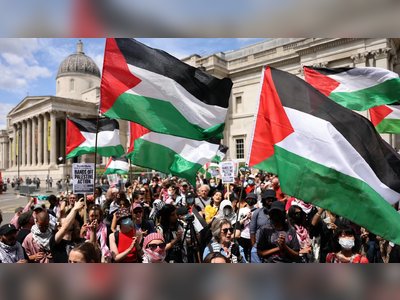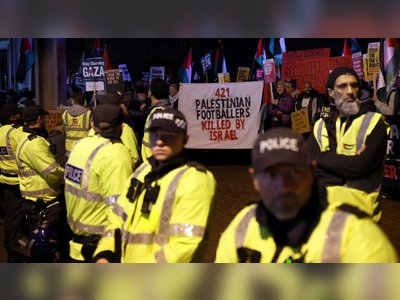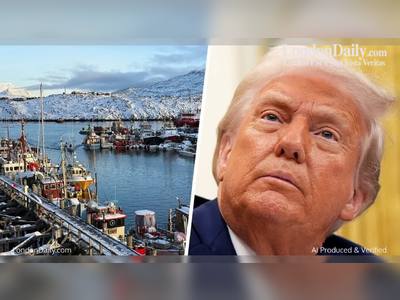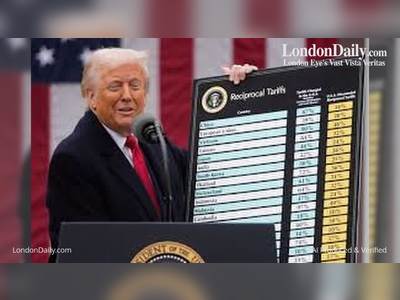From Ethiopia to Iran, places that escaped colonisation by Europeans – how did they do it?
The modern colonial era began in the 15th century and, at its height, at the end of World War II, a third of the world’s population lived in territories ruled by foreign powers. The maritime European nations of Britain, Portugal, Spain, France and the Dutch Republic led the way in carving up the continents. The Brits were so rapacious, in fact, that Indian politician Shashi Tharoor humorously observed, “The sun never set on the British Empire because even God couldn’t trust the Englishman in the dark.”
Colonialism has been defined as the discovery, conquest, settlement and economic exploitation of one political body over another. Only a handful of countries managed to avoid suffering under the yoke of European control, although historians aren’t always in agreement over the distinction between colonisation and occupation under the guise of a “mandate”, “protectorate”, “possession” or “territory”.
Concessions, meanwhile, were the result of the unequal treaties China signed with Western powers as well as Japan in the 19th and early 20th centuries. Territory in coastal cities was conceded and ports were opened up for trade on terms that were unfavourable to the Chinese.
Here are seven countries that (arguably) escaped the clutches of the European imperialists.
Ethiopia
Between 1880 and 1900, about 90 per cent of the continent was appropriated by Europeans during the so-called “scramble for Africa”. However, scholars place Ethiopia in the “never colonised” category, on the grounds that, despite being occupied by Italy from 1936-1941, no lasting colonial infrastructure developed. Ethiopian guerillas were under constant attack from Benito Mussolini’s forces but never capitulated.
On the plus side, the Italians did leave behind pasta, pizza and lasagne. On the subject of food, Francesco Castelli, a soldier in the Italian army, decided to stay on at the end of the war and open a trattoria. The Addis Ababa eatery is still going strong and has welcomed the likes of former United States president Jimmy Carter, U2 frontman Bono, and singer-songwriter and political activist Bob Geldof, who rates Castelli’s the best Italian restaurant not just in Africa, but in the whole world.
Japan
Coloniser (Taiwan, Korea, Manchuria, South Sakhalin), rather than colonised, Japan kept Europeans (and Russians) at bay using a combination of guile, military strength, diplomacy and distance. To learn more about a lesser known but amusingly named conflict, head to Satsuma Eikoku-kan, near Kagoshima. From the bright-red double-decker bus parked outside to the royal family and Harry Potter memorabilia, the teahouse pays homage to all things British.
An on-site museum includes newspaper accounts, photos and memorabilia relating to the Anglo-Satsuma war, which took place between Britain and Japan in 1863. The “fruity” confrontation began when a party of Brits showed insufficient respect to a local samurai. The subsequent spat resulted in 16 deaths.
Korea
As a single nation, Korea was colonised by Japan in 1910 and remained so until independence, in 1945, but it resisted occupation by Western powers. Inevitably, Britain couldn’t help but have a nibble where it thought no one would notice. Edward Belcher dropped anchor at the remote Geomundo Island in 1845, renaming the southerly outpost Port Hamilton and establishing a base there.
The British held it for almost two years, mainly to prevent the Russians from doing the same thing. History buffs can visit the British cemetery, in which 10 mariners are buried, but it’s quite a slog to the isolated Korean island, so head instead to Possession Street, in Sheung Wan, which commemorates the landing of the very same Edward Belcher, and his men, who were the first of the British fleet to set foot in Hong Kong in 1841.
Thailand
Finding itself a neutral buffer between French-controlled Indochina and British-ruled Burma, the kingdom of Siam led a charmed life as an autonomous state. Diplomacy and a willingness to adopt Western values and habits enabled King Chulalongkorn to pull off a minor miracle by making sure most of his kingdom escaped colonial rule. In 1932, the country was renamed Thailand, meaning Land of the Free, in recognition of the unlikely achievement.
Part of the king’s balancing act involved embracing European technology and construction methods. In Bangkok, the Italian-designed Old Customs House, which served as a backdrop in Wong Kar-wai’s In the Mood for Love (2000); the neoclassical Ministry of Defence, facing the Grand Palace; and the Renaissance-style Assumption Cathedral are all examples of European architectural styles.
Nepal
At its height, the British Empire governed one-fifth of the world’s population but there were still a few pesky states that wouldn’t submit. Nepal was a protectorate for a short period and after the Anglo-Nepalese war, the British East India Company assumed control of about 30 per cent of the mountainous nation, but the country never succumbed to full domination. And it was those mountains that helped Nepal keep the Europeans at bay, as the almost impenetrable terrain hindered military incursions.
Battlefield enthusiasts should visit the Khalanga War Memorial, near Dehradun, India, which honours the Gurkhas who bravely fought in the battle for Nalapani Fort, a six-week siege that kicked off the above-mentioned war, in 1814.
Tonga
Another in the “was it or wasn’t it colonised” category is the South Pacific island of Tonga. When Germany began showing an interest in the Friendly Isles, Britain (yes, them again) sent in the navy and the islands became an autonomous protectorate, in 1900 – a status Tonga retained until full independence, in 1970. So although the Polynesian kingdom gave up certain sovereign powers, it was never colonised.
Captain Cook first referred to Tonga as the Friendly Isles in 1773, although, ironically, on a later visit, locals planned to kill the British explorer and loot his ships but couldn’t agree on the best way of doing so. Cook sailed off unaware of his narrow escape. Today, a plaque marks the spot where the celebrated navigator came ashore to meet the king of Tonga in 1777.
Iran
Some countries were prepared to sacrifice small chunks of territory if it meant they were able to maintain autonomy. Iran ceded land to Russia and Britain, with the latter seizing the rights to oil, gas and the tobacco trade, but neither conquered nor colonised Persia, as the country was known before 1935.
Qeshm Island, the scene of a fierce battle between the British Navy and ruling sheikhs, is today a popular tourist destination renowned for its beaches, mangrove forests and a Portuguese castle. The dramatic wind-sculpted landscapes and geological formations of a Unesco-designated geopark are preserved and protected through eco-tourism initiatives coordinated by local communities.










